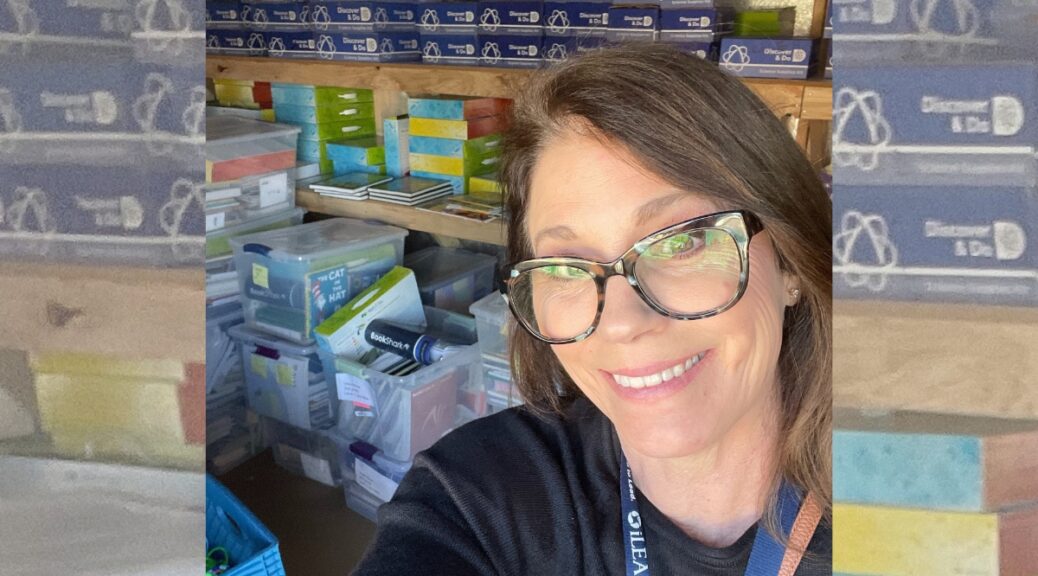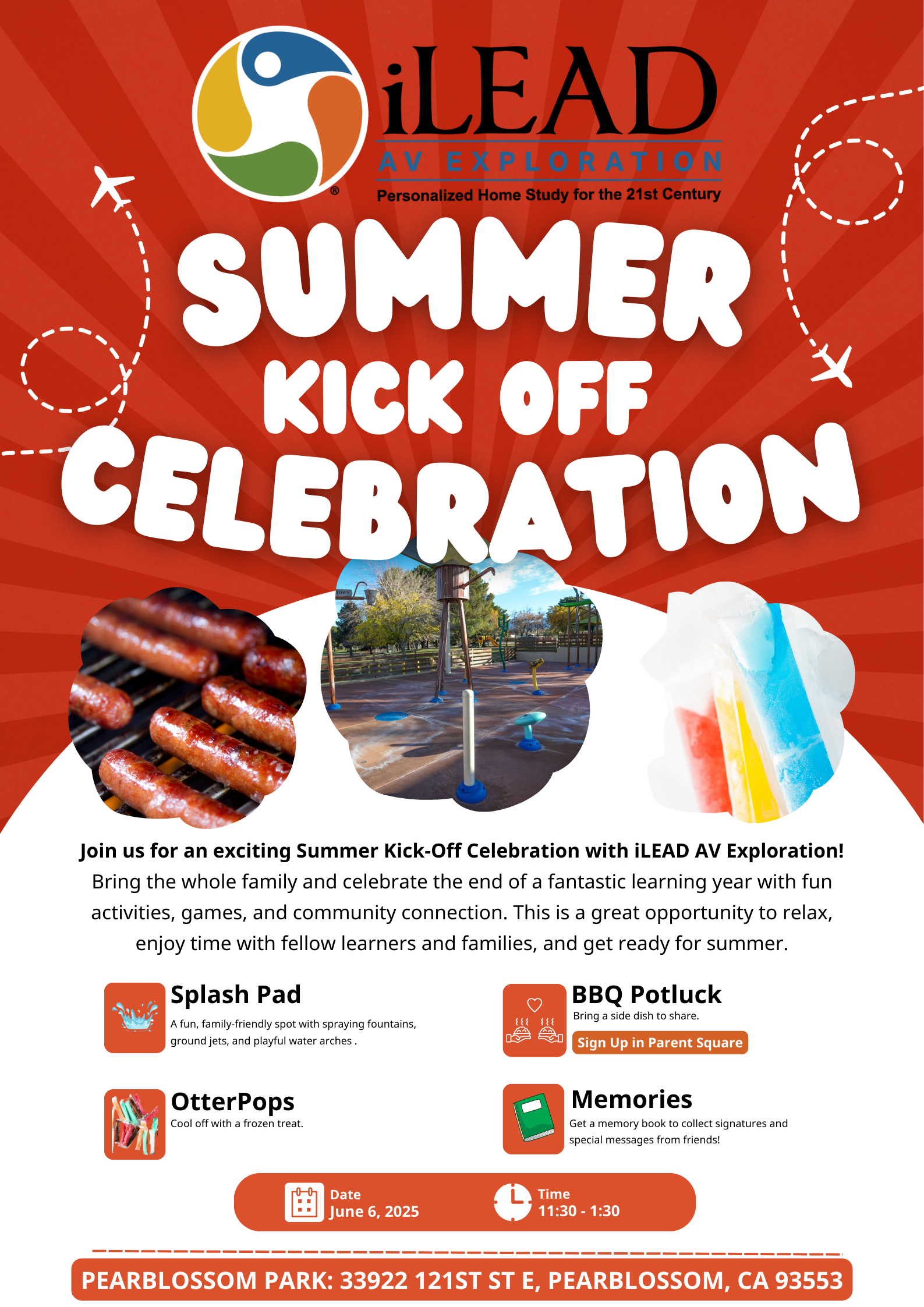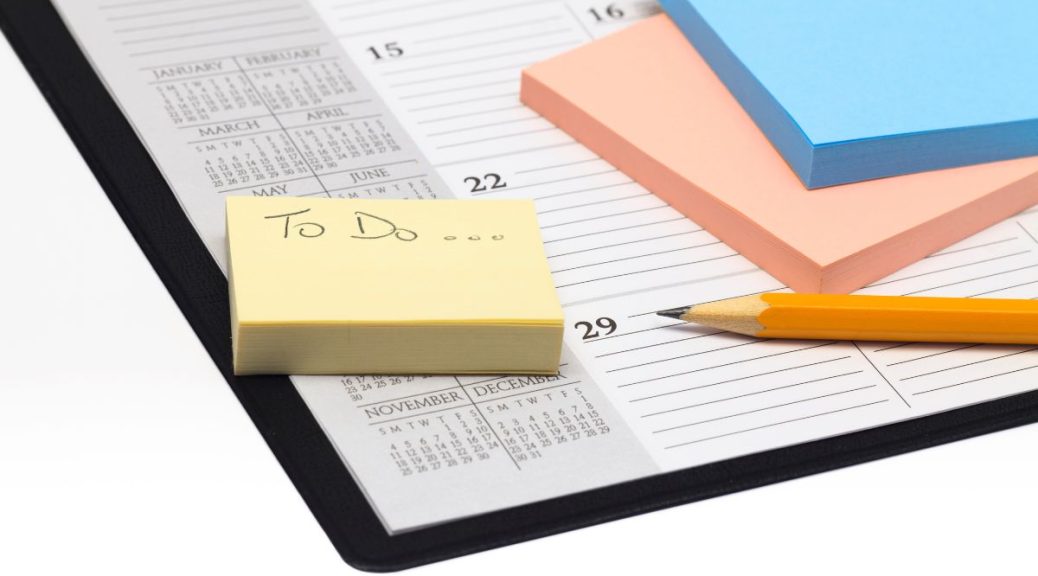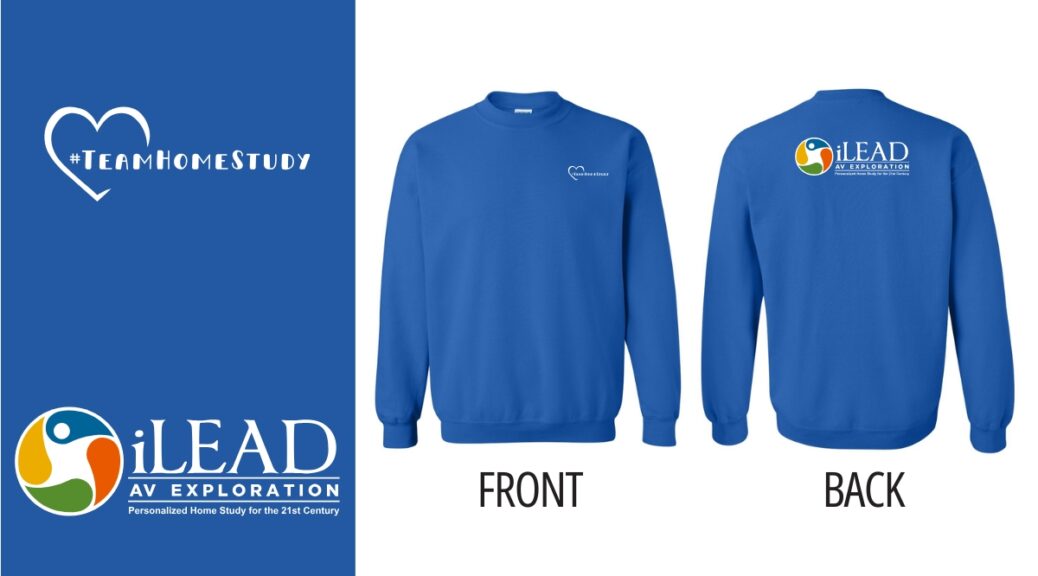Our iLEAD AV Exploration sweatshirts just went on sale! Stay cozy and show your school pride! Sweatshirts are now on sale for just $15 each (payable by cash or check to iLEAD Hybrid upon pickup).
Tag Archives: ilead antelope valley

Current Families, Remember to Re-Register for 2025-26
Dear Families,
We are looking forward to an exciting 2025-26 school year! Starting this week, we will be asking all returning families to complete the re-registration forms. This will require several steps, and we will be sending you timely updates.
The “Why” of Re-registration
One of the primary purposes of the re-registration process is to ensure your child’s safety. We will be collecting emergency contact information, including phone numbers and email addresses, as well as information about your learner’s particular health needs that we may need to be aware of. We will also request signatures for forms that must be updated yearly, such as address verification and permission for your learner to use technology.
You will receive a link to re-register for the 2025-26 school year. If you have completed the Intent to Return and have committed to your spot for the 2025-26 school year, please refer to the attached video and help document for assistance completing re-registration. Please review all areas, such as household, learner, and parent. We request that you complete this re-registration as soon as possible to assist our staff with this process.
Thank you for your prompt attention to our upcoming re-registration requests as we anticipate an amazing 2025-2026 school year!
El “Por qué” de la Reinscripción
Uno de los propósitos principales del proceso de reinscripción es garantizar la seguridad de su hijo. Estaremos recopilando información de contacto de emergencia, incluidos números de teléfono y direcciones de correo electrónico, así como información sobre las necesidades de salud específicas de su alumno de las que debamos estar al tanto. También solicitaremos firmas para formularios que deben actualizarse anualmente, como la verificación de dirección y el permiso para que su alumno utilice la tecnología.
A continuación se encuentra un enlace para reinscribirse para el año escolar 2025-26. Si ha completado la Intención de Regreso y se ha comprometido tomar su lugar para el año escolar 2025-26, por favor consulte el video adjunto y el documento de ayuda para completar la reinscripción. Por favor revise todas las áreas, como hogar, alumno y padre. Solicitamos que complete esta reinscripción lo antes posible para ayudar a nuestro personal con este proceso.
Gracias por su pronta atención a nuestras próximas solicitudes de reinscripción, ¡esperamos un increíble año escolar 2025-2026!

iLEAD AV Exploration Crime Scene Science Assembly: May 29
Join iLEAD AV Exploration learners in person at the iLEAD Acton Office on May 29 for a Crime Scene Science Assembly in the Case of the Cat-Napper! Our special guest, Professor Kloo, will use forensic science to get to the bottom of the mystery. In this interactive program, learners will use the scientific method as their guide to navigate the twists and turns of the investigation. As the case unfolds, learners will learn about fingerprinting, chemical indicators, footprint impressions, and much more!
Assembly will be held at our iLEAD Acton Office, 3720 Sierra Hwy., Unit a, Acton, CA.
- 6th-8th Grade: 11:30 AM – 12:15 PM
- TK-5th Grade: 10:30-11:15 AM
RSVP on ParentSquare!
Note: This is not a drop-off event. If you have kids in both age groups, you can either take both kids to one or take them individually. The science and content will be more complex for the older kids.


iLEAD AV Exploration Curriculum Return: June 2-4
iLEAD AV Exploration families, all curriculum boxes must be returned during the last week of school. Return appointments are available on June 2, 3, and 4, 2025, between 9:00 AM and 2:00 PM each day.
Please sign up for a return slot and let us know how many boxes you’ll be bringing back and include your learner’s name(s).
Returning Items:
- All curriculum boxes (all learners)
- Math manipulatives: integer block kit (if learner is not returning for 2025-26)
- Tech items (if learner is not returning for 2025-26)
Chromebooks and Charger:
- Learners staying with iLEAD AV Exploration may keep their Chromebook for the 2025-26 school year.
- Learners not returning must return all curriculum and tech items, including Chromebooks and chargers.
Thank you for helping us wrap up the school year smoothly!

iLEAD AV Exploration Summer Kickoff Celebration: June 6
Join us for an exciting Summer Kickoff Celebration at iLEAD AV Exploration!
Bring the whole family and celebrate the end of a fantastic learning year with fun activities and community connection. This is a great opportunity to relax, enjoy time with fellow learners and families, and get ready for a summer full of adventure.
Enjoy a splash pad, OtterPops, BBQ potluck, and pick up a free memory book to collect signatures and special messages from friends!
- Date: Friday, June 6
- Location: Pearblossom Park
- Time: 11:30 AM – 1:30 PM
What to Bring:
- Please bring a side to share. iLEAD AV Exploration will provide hot dogs.
- Learners should wear their swimsuits and sunscreen and bring a towel if they want to enjoy the splash pad!
Sign up on ParentSquare!
Come for the fun, stay for the memories! We can’t wait to celebrate with you!


Upcoming Events
iLEAD AV Studio
- Mon., 5/26: Memorial Day
- Mon., 6/2: Backyard Bash, 5:00-7:00 PM
- Thur., 6/5: Donuts with Dad, 8:30-9:30 AM
- Fri., 6/6: TK Promotion Ceremony, 9:00-10:00 AM
- Fri., 6/6: Kindergarten Promotion Ceremony, 11:00 AM – 12:00 PM
- Fri., 6/6: Kindergarten Promotion Ceremony, 11:00 AM – 12:00 PM
- Fri., 6/6: 8th Grade Celebration at Empower Generations High School, 2:00-3:00 PM
- Fri., 6/6: Last Day of School
Click here for the school year calendar.
iLEAD AV Exploration (Home Study)
- Thur., 5/22: Fire Station Meetup
- Mon., 5/26: Memorial Day
- Thur., 5/29: Crime Scene Science Assembly in the Case of the Cat-Napper. RSVP on ParentSquare
- Mon.-Wed., 6/2-4: Curriculum Return
- Thur., 6/5: Kindergarten Promotion, Quartz Hill Library, 11:00 AM – 12:00 PM
- Thur., 6/5: 8th Grade Promotion, Quartz Hill Library, 12:00-1:00 PM
- Fri., 6/6: Last Day of School
Click here for the school year calendar.

iLEAD AV Exploration Tip #26 for Home Study Success: Emotional Wellness
Welcome back to iLEAD AV Exploration’s Tips for Home Study Success! This week we’re focusing on emotional wellness as part of our home study days.

iLEAD AV Exploration Spirit Wear Sweatshirts: Spring Sale
Our iLEAD AV Exploration sweatshirts just went on sale! Stay cozy and show your school pride! Sweatshirts are now on sale for just $15 each (payable by cash or check to iLEAD Hybrid upon pickup).

Current Families, Remember to Re-Register for 2025-26
Dear Families,
We are looking forward to an exciting 2025-26 school year! Starting this week, we will be asking all returning families to complete the re-registration forms. This will require several steps, and we will be sending you timely updates.
The “Why” of Re-registration
One of the primary purposes of the re-registration process is to ensure your child’s safety. We will be collecting emergency contact information, including phone numbers and email addresses, as well as information about your learner’s particular health needs that we may need to be aware of. We will also request signatures for forms that must be updated yearly, such as address verification and permission for your learner to use technology.
You will receive a link to re-register for the 2025-26 school year. If you have completed the Intent to Return and have committed to your spot for the 2025-26 school year, please refer to the attached video and help document for assistance completing re-registration. Please review all areas, such as household, learner, and parent. We request that you complete this re-registration as soon as possible to assist our staff with this process.
Thank you for your prompt attention to our upcoming re-registration requests as we anticipate an amazing 2025-2026 school year!
El “Por qué” de la Reinscripción
Uno de los propósitos principales del proceso de reinscripción es garantizar la seguridad de su hijo. Estaremos recopilando información de contacto de emergencia, incluidos números de teléfono y direcciones de correo electrónico, así como información sobre las necesidades de salud específicas de su alumno de las que debamos estar al tanto. También solicitaremos firmas para formularios que deben actualizarse anualmente, como la verificación de dirección y el permiso para que su alumno utilice la tecnología.
A continuación se encuentra un enlace para reinscribirse para el año escolar 2025-26. Si ha completado la Intención de Regreso y se ha comprometido tomar su lugar para el año escolar 2025-26, por favor consulte el video adjunto y el documento de ayuda para completar la reinscripción. Por favor revise todas las áreas, como hogar, alumno y padre. Solicitamos que complete esta reinscripción lo antes posible para ayudar a nuestro personal con este proceso.
Gracias por su pronta atención a nuestras próximas solicitudes de reinscripción, ¡esperamos un increíble año escolar 2025-2026!

iLEAD AV Studio Takes the Ice Bucket Challenge for ALS!
iLEAD AV Studio enthusiastically accepted the Ice Bucket Challenge from at Empower Generations High School to raise awareness for ALS! Braving the task, they’ve now passed the challenge on to iLEAD Lancaster!


